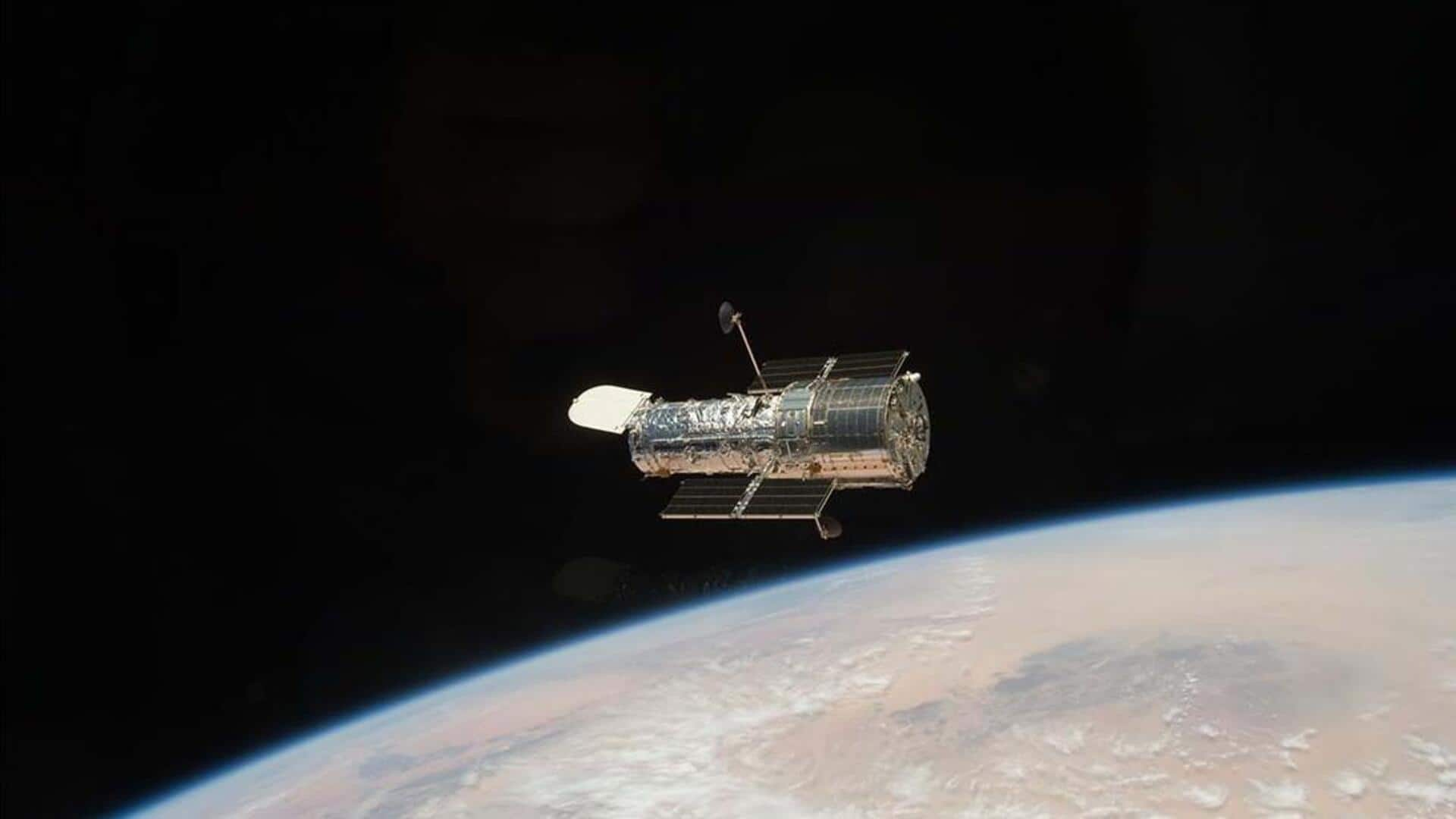
Latest discoveries by NASA's 33-year-old Hubble Space Telescope
What's the story
NASA's Hubble Space Telescope is among the most powerful space observatories. To date, the telescope has probed more than 40,000 cosmic objects, providing views that are not possible with ground-based telescopes. Since its launch in 1990, it has significantly enhanced our understanding of the universe. In recent times, the telescope has spotted some interesting celestial bodies. Here's a roundup of Hubble's latest findings.
Context
Why does this story matter?
The James Webb Space Telescope (JWST), which launched in December 2021, has been surprising us with several stunning discoveries, including the deepest view of the universe. But long before Webb entered the scene, Hubble has been achieving countless milestones in space exploration. Hubble recently marked 33 years in space and the observatory is still going strong, unraveling the mysteries of the cosmos.
#1
Hubble spotted "extraordinarily bright interacting galaxies"
Earlier this month, Hubble snapped a picture of exceptionally bright interacting galaxies called AM 1214-255. These galaxies are said to contain what's called active galactic nuclei, or AGNs, which refer to the extraordinarily luminous central region of a galaxy. But why are AGNs so bright? Their luminosity is caused due to matter being pulled into supermassive black hole lying at the center of galaxies.
#2
Hubble may have spotted a rare black hole
Black holes are among the most intriguing cosmic objects. Astronomers say almost all known black holes are either small or gigantic. While studies suggest 'intermediate-sized' black holes exist, they are rare and hard to find. Hubble may have helped spot one of these elusive cosmic objects. The study suggests a rare intermediate-sized black hole lies in a globular star cluster, 6,000 light-years away.
#3
The telescope imaged a densely packed star cluster
Hubble also captured a densely packed group of stars called NGC 6325. The star cluster lies about 26,000 light-years from Earth in the constellation Ophiuchus. "Globular clusters like NGC 6325 are tightly bound collections of stars with anywhere from tens of thousands to millions" of stars, per NASA. It can be found in all types of galaxies and help astronomers study star formation.
Information
The star cluster might be home to a black hole
However, researchers were not looking to understand star formation in NGX 6325. They predict that the star cluster is home to an intermediate-mass black hole which is affecting the motion of surrounding stars.
#4
Hubble captured an intriguing jellyfish galaxy
Probably one of Hubble's most interesting findings is a jellyfish galaxy, JO175, which lies over 650 million light-years away in constellation Telescopium. "Jellyfish galaxies get their unusual name from the tendrils of star-forming gas and dust that trail behind them, like the tentacles of a jellyfish," said NASA. "These bright tendrils contain clumps of star formation and give jellyfish galaxies a particularly striking appearance."
Conclusion
The telescope specifically looked at the star-forming clumps of dust
Hubble specifically peered into the "star-forming clumps of gas and dust" in the jellyfish galaxy in order to help astronomers better understand how star formation takes place. What's interesting is that the study found that "star formation in the disks of galaxies is similar to star formation in the extreme conditions found in the tendrils of jellyfish galaxies."